Library in the Labyrinth
Cornell University Thesis (2015)
Venice, Italy

Exterior Rendering of Front Court
Proposal: to design a collection of reading rooms within a labyrinth sited in Venice
Thesis Advisors
Vince Mulcahy
Jim Williamson
The project is sited at the intersection of contrasting approaches in the southeast of Venice; the program is the series of intimate reading rooms from Borges’ Library of Babel. I trace routes though the streets of Venice as montages of perspective paintings in Walking Venice. These sequences converge, diverge, open up and collapse to produce an intersecting labyrinth of space. They are then formally abstracted to become the internal streetscape of the library in A Model of Paintings. Through this streetscape, the observer transitions from the outside world to an intimate study conducive to getting lost in a book.
Library in the Labyrinth is an exploration of how architecture can produce a narrative and simultaneously how narrative can produce architecture. The narrative is understood as a choreographed sequence of space; it is a visual and emotive experience of place. I begin with the idea of the promenade and the picturesque. I draw further inspiration from the work of John Hejduk and Jorge Luis Borges for their abilities to surpass linear understandings of narrative toward labyrinthine experiences that transcend singular times.
Related Project Pages
I come from a distant place in Venice. In this maze, I forget where I came from but I can feel it where I am. I see many routes, but it is unclear where any of them lead. The labyrinth is an instrument for viewing the context. It shows the most vast and the most intimate moments of the surrounding landscape. I see the hidden courtyard; I find the secret alleyway. I can move out over the canal and stretch my arms over the adjacent roof. As I move vertically, slowly, I see the nearby facades and the distant boundaries.
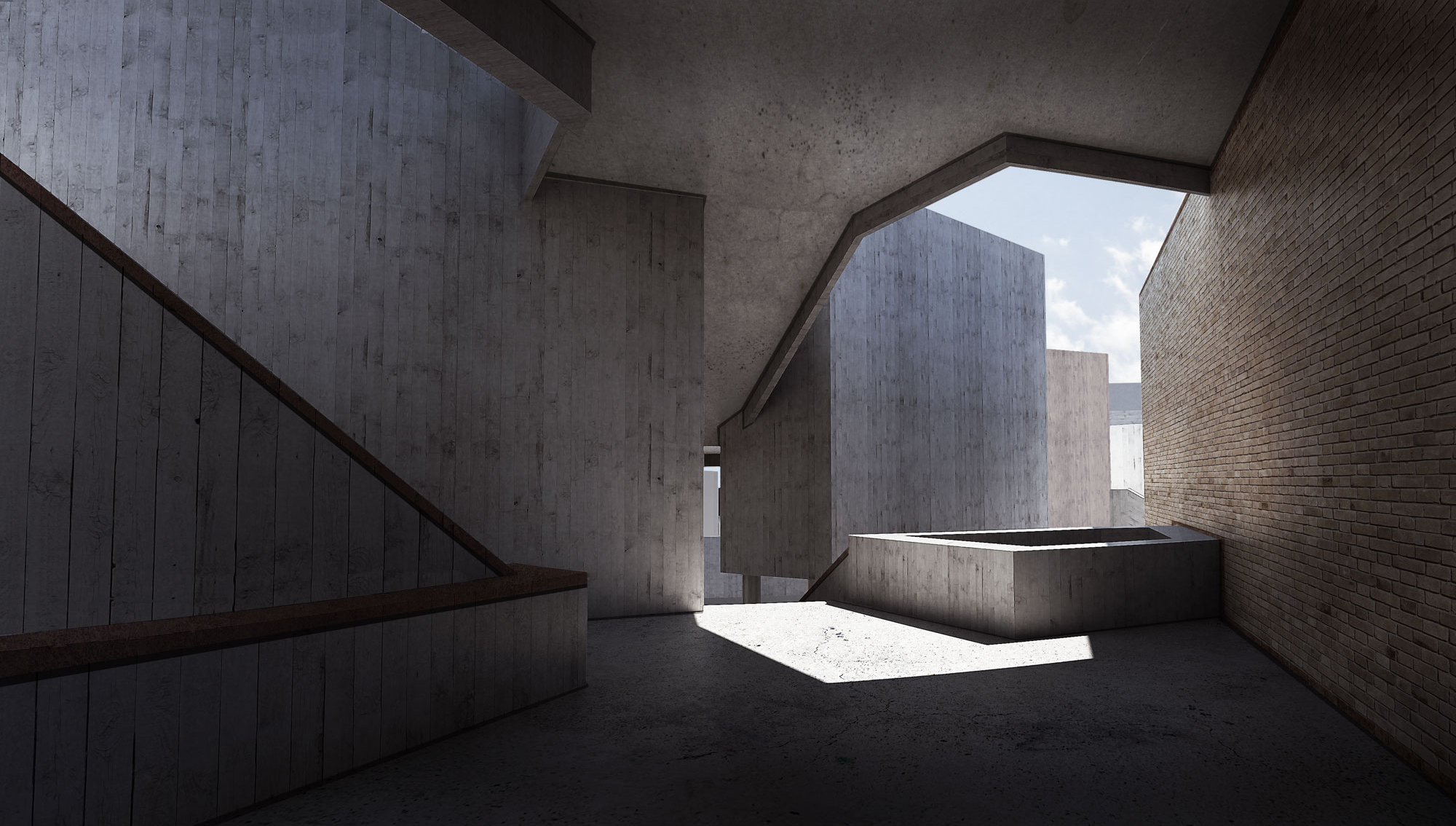 Exterior rendering wandering through inner pathways
Exterior rendering wandering through inner pathways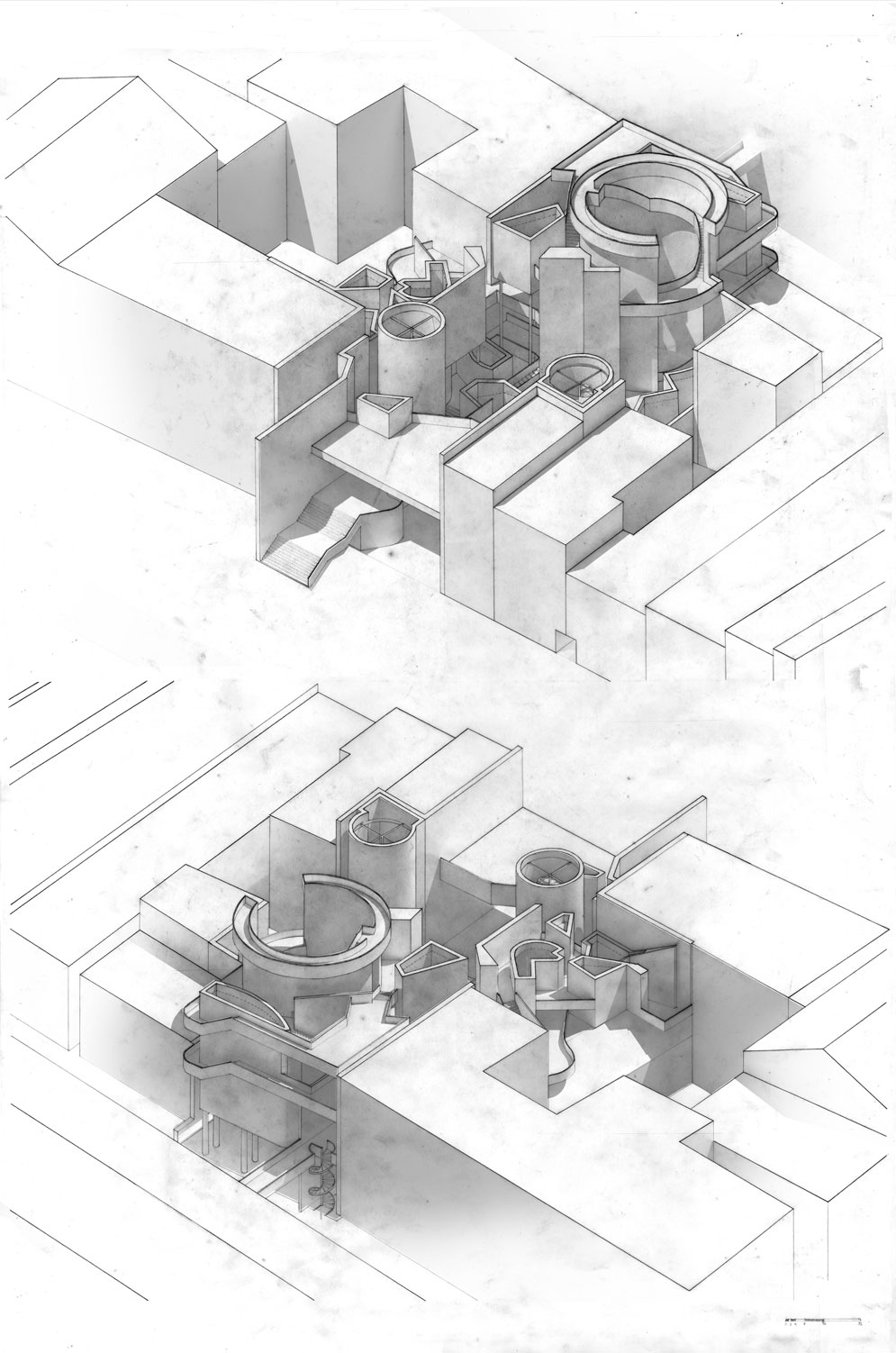
Axonometric Drawings
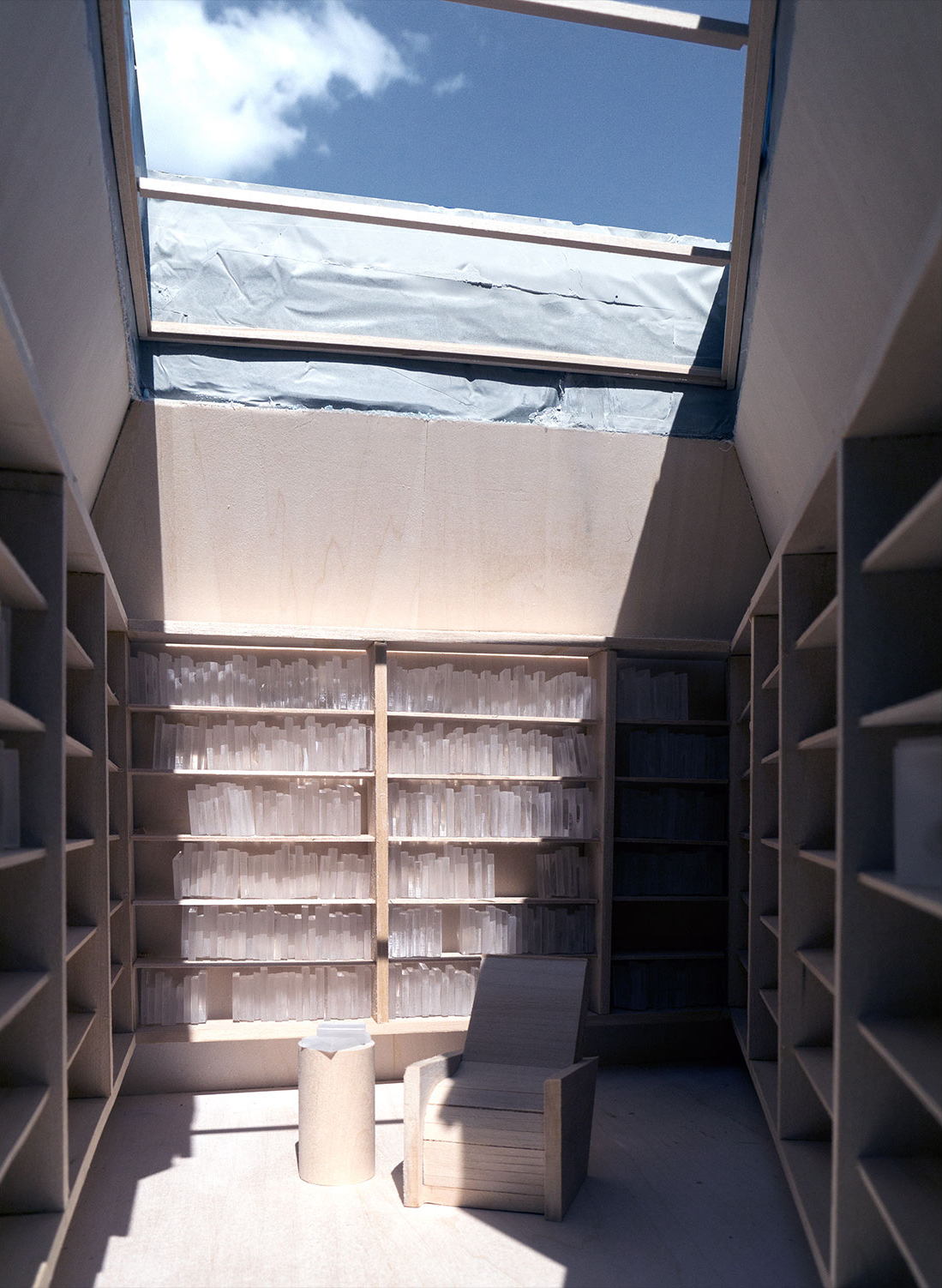
Large scale model of a reading room
The labyrinth from A Model of Paintings is worked into the site. It is cut, rotated, scaled to produce a multiplicity of simultaneous pathways. An important step in the implementation of the labyrinth in the city is the addition of the large cylinder volumes. The project seeks not to be about the compression of the city, but rather about the infinite space behind the form. The cylinders become holes that show the empty space that the maze is masking.
Like the work of Borges, a central theme is to weave contrasting narratives in such a way that the literary structure collapses. The cylinders show the infinite depth between the water and the sky. It is a reminder that the maze is an imposed structure that rests on the infinite. There are two sixty foot cylindrical bookshelves and one massive cylindrical void. The bookshelves are home to rare books, to be deposited and circulated only by the librarians.

Exterior rendering looking through centraL cylindrical void
Each of the two cylinders of books has one librarian, and they live in apartments that are adjacent. The two apartments are hidden in the labyrinth.The cylinders of books are abstract containers; they are separate from the world they occupy. The large cylinder is a deep void that connects the water to the sky. It is an infinite hole that stretches deep down and high above. The remaining rectangular prisms that produce the inner streetscape are carved out to become fourteen intimate reading rooms. Each is lined with bookshelves on all sides, even the back side of the door. They are abstract spaces separate from the maze outside; the skylight above offers a connection to the atmosphere and the stars. There is a single chair and small table in each reading room. One person occupies each room at a time. There are heavy pivoting doors for each room. When open, it invites; when closed, it disappears.
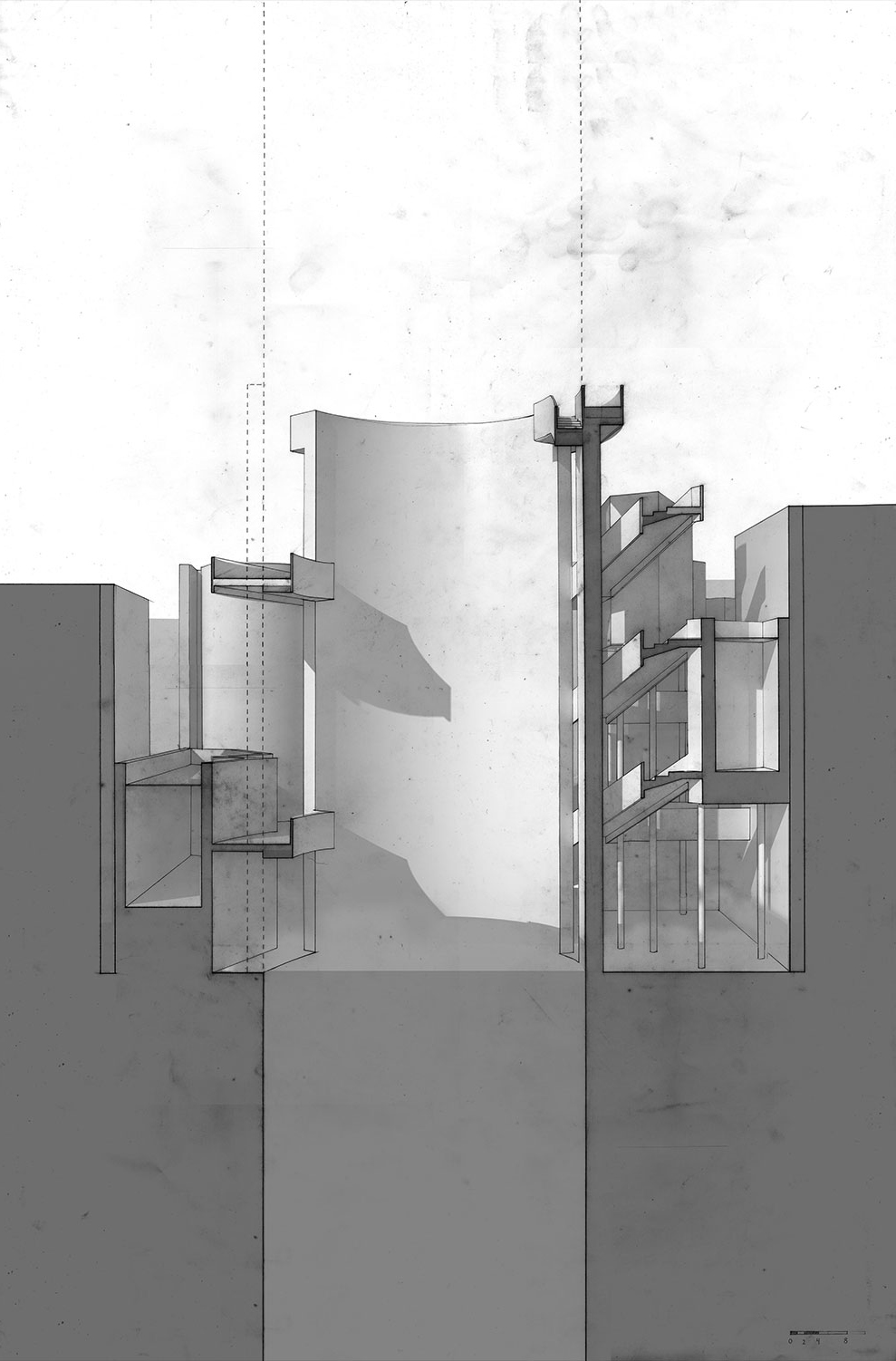



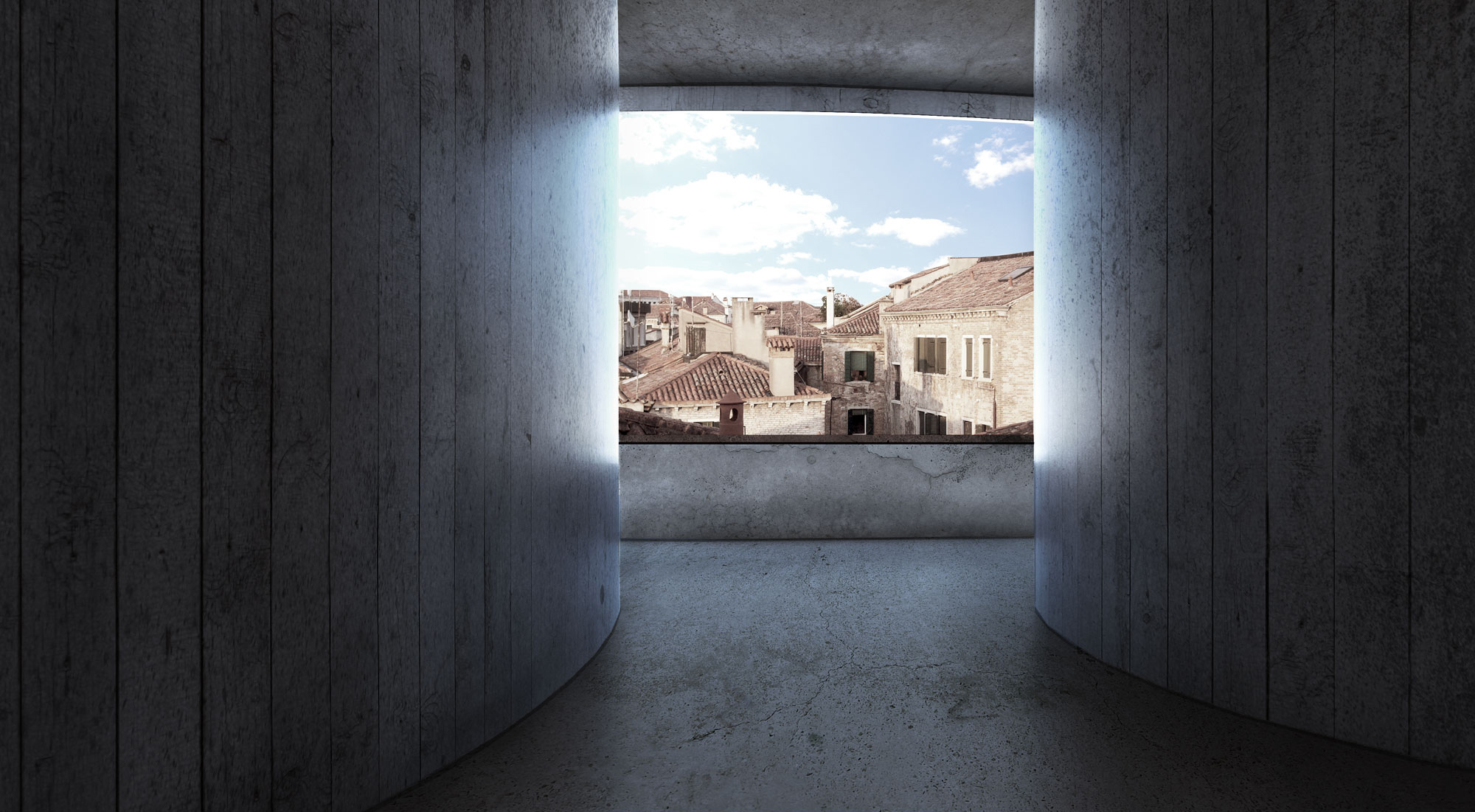



As the labyrinth produced through A Model of Paintings stretches and grows to accommodate the inflections of the site, it becomes a vessel for understanding place. The forms stretch into neighboring courtyards and bridge across the adjacent canal. The platforms offer views over the nearby rooftops and distant views across the city. It is a machine that weaves between an intimate reading of the context and an abstract world in the mind. It operates on three levels: mentally, visually, and physically. These levels are all engaged simultaneously in varying degrees, and they serve to reinforce the boundaries between public and private, interior and exterior.

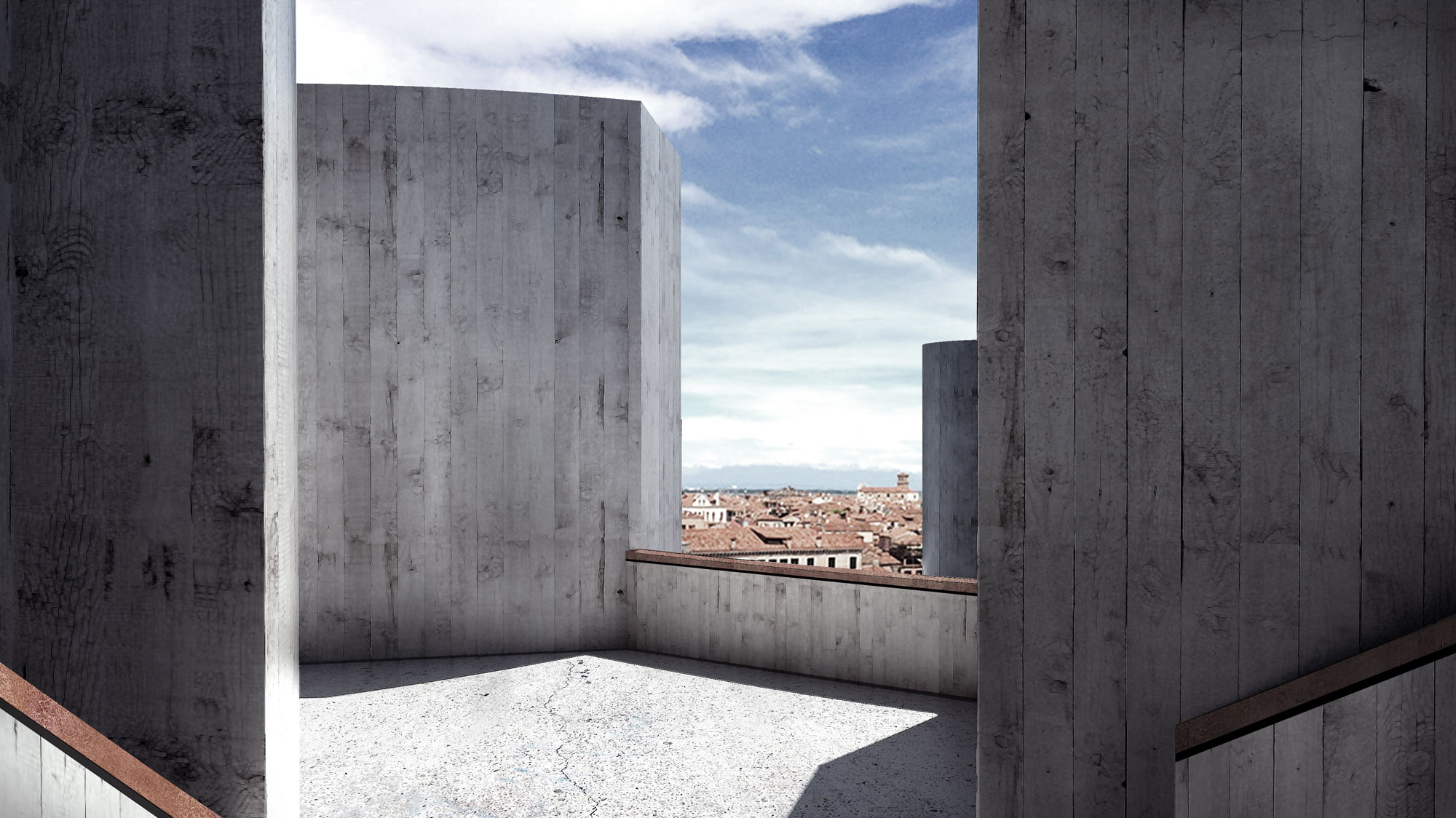
I weave between two worlds mentally when I lose sense of where I am, when I get lost and no longer recognize the forms of the place. I change worlds mentally when I shut the door to my reading room. There is no longer an outside and my mind stretches out to touch the walls. Finally, my mind fully loses touch with the outside world when I open the book. I weave between two worlds visually when I enter the labyrinth and no longer see the outside world of Venice. It reappears in brief moments: a brick wall here, a pitched roof rising there. At times it is dark and quiet, I can only see the light ahead. At the top, I can see everything. I weave between two worlds physically when I can no longer move to the destinations I see in the distance. Like the city beyond, I am sometimes shown a clear path across the courtyard or around the facade; and sometimes the distance is unattainable like a painting on the wall.
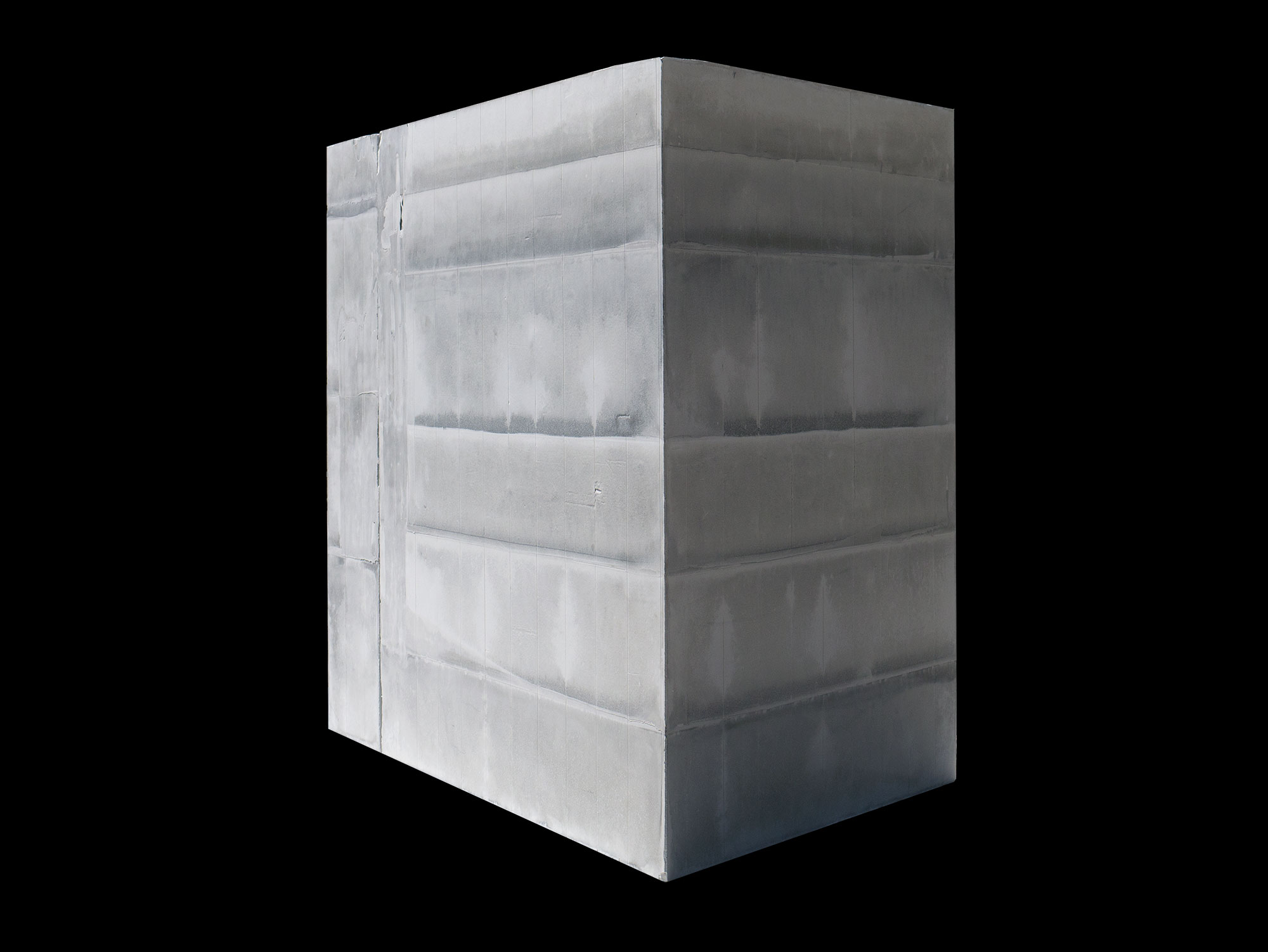
Large scale cast concrete model of a reading room - Rear
 Large scale cast concrete model of a reading room - Interior
Large scale cast concrete model of a reading room - InteriorThe materiality is anonymous; it is abstract. All form is just form. I see the indentations of how it was made; I see hints of the cracks that it will succumb to. The concrete curves softly like a body; it invites me to follow. In the darkness, light creeps around it. In the light, it is as bright as the sky. The many different faces are the subtle variations of the seasons. Their edges trace the movement of the sun overhead as they trace their way to the ground. My feet continue from the city floor into the labyrinth. It feels the same. In the labyrinth, I am reminded of where I came from, but as I continue on, I begin to forget it. As the water rinses up its base and around the columns, the concrete ages. As rain batters the top and wind brushes the side, the concrete ages. But like the city, its permanence persists.

Perspective view looking down toward infinte reflection in the water
I am in a hole. It is deep and wide. Once again, I forget where I was before. I look down its depths to the still water. I look past the water’s surface and see a deep tunnel piercing down to infinity. I look up and see the sky. I am caught between empty depths. I know the space is relatively shallow, but I can feel how it goes forever. Caught in this empty hole of the labyrinth, the space feels like my mind did when I was in the room reading. It is the empty space always hiding behind the thin veil of what we see. I turn down the alley and see the moment where the water meets the sky, as far distant as my eyes can focus. As I turn the corner, I can see the path from which I came. I look down the park and can see myself walking towards its end. I emerge at the end and see the vast ocean. All the pitched roofs fade under an infinite distance. I remember what it feels like to be lost in a book. In that moment, there is no past or future. I am nowhere but now.

